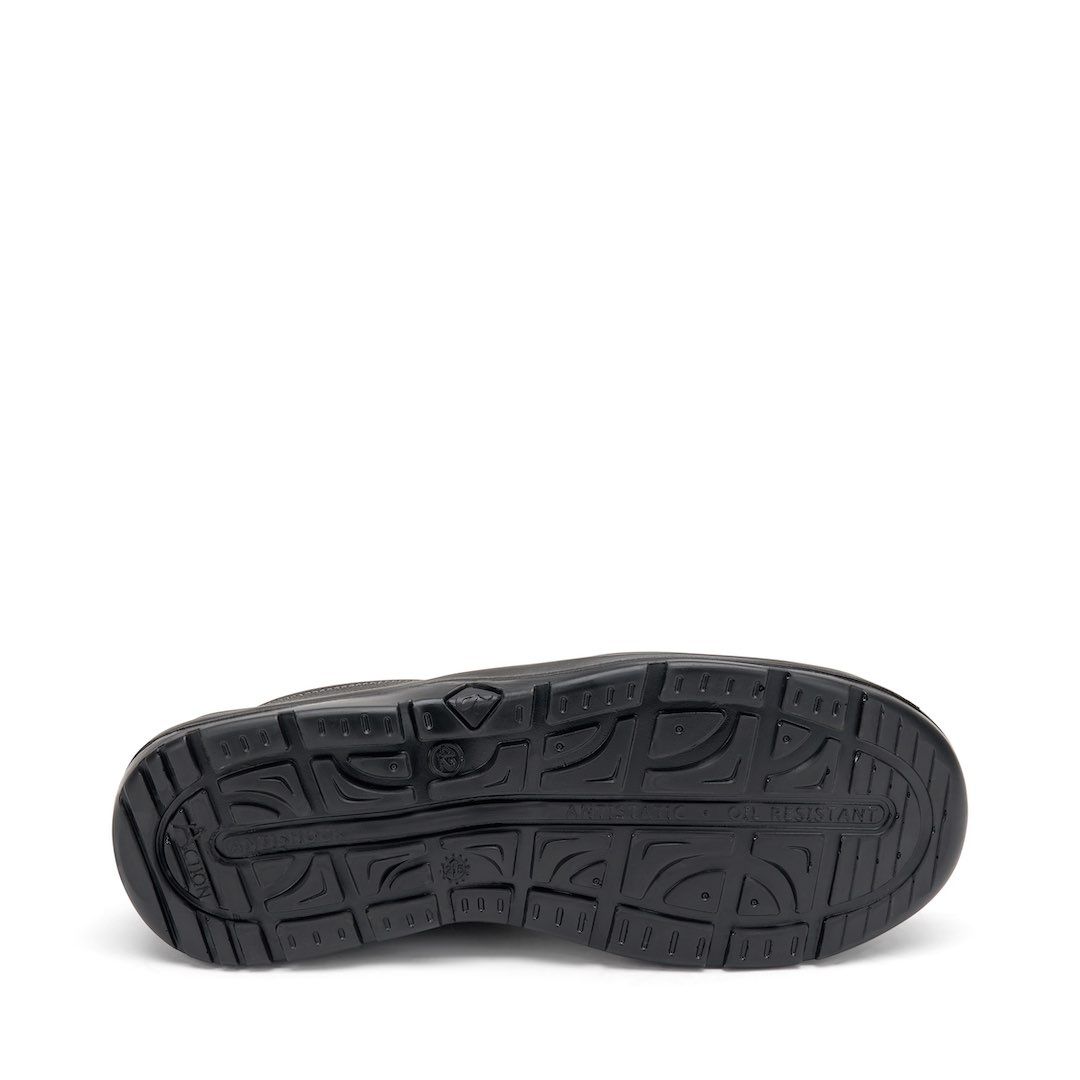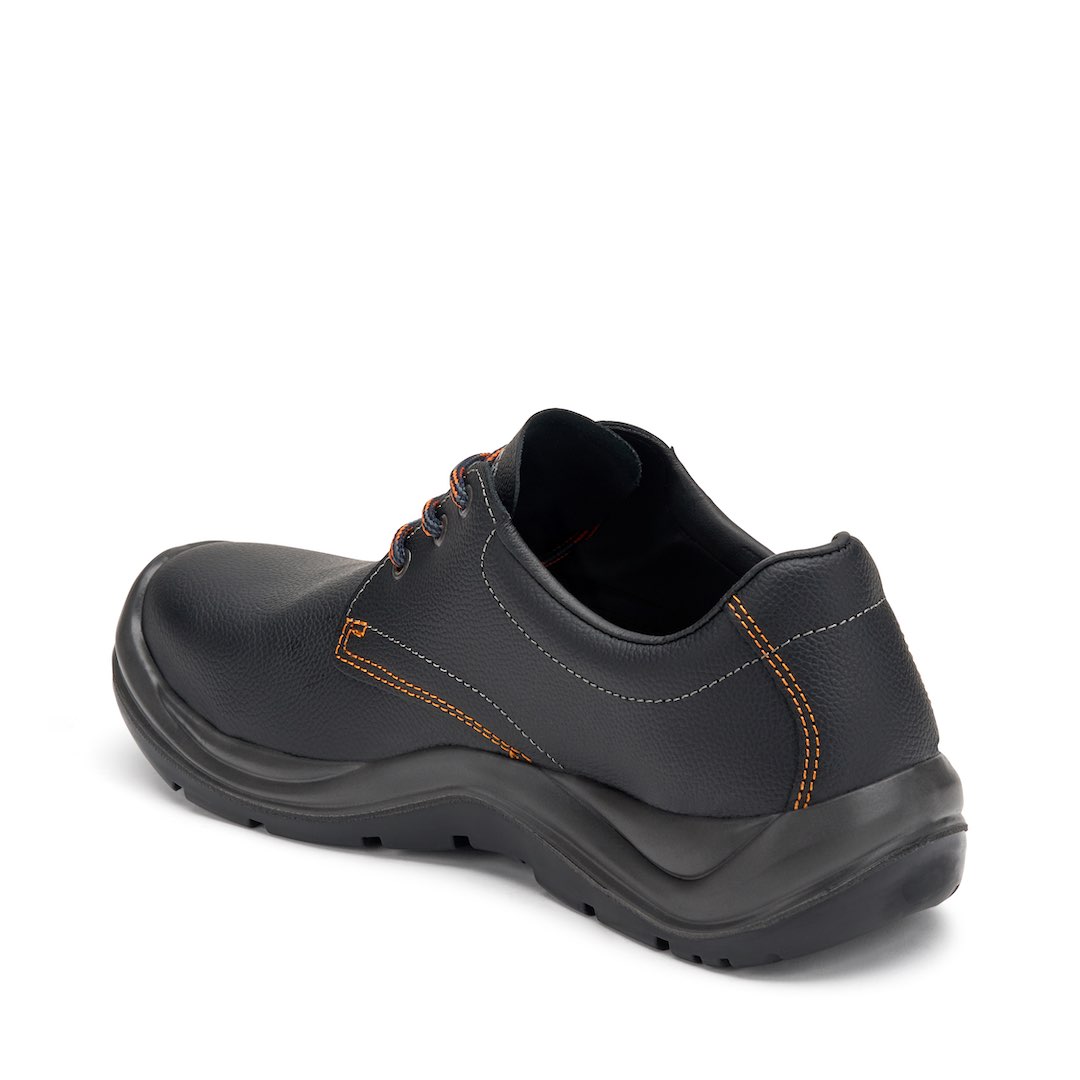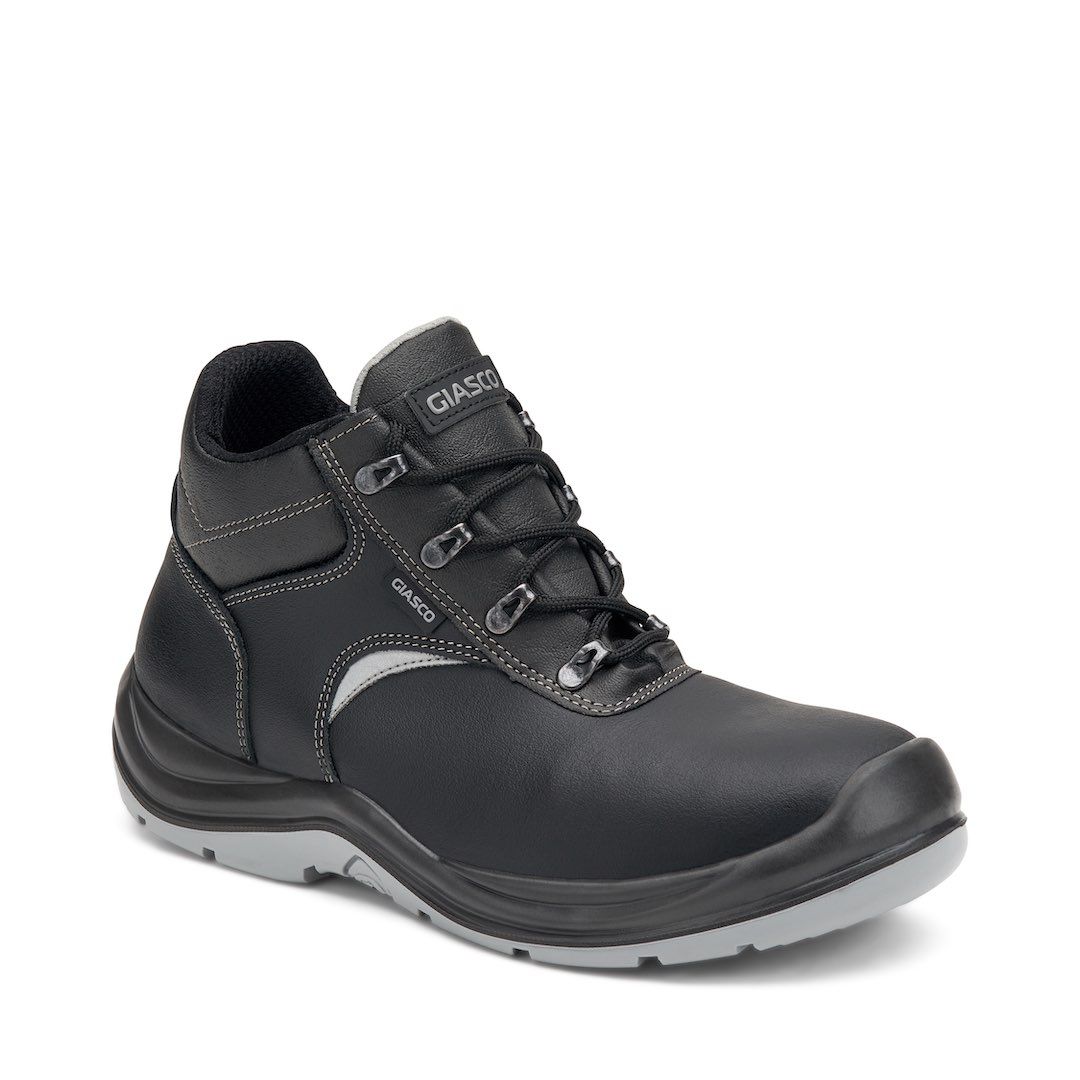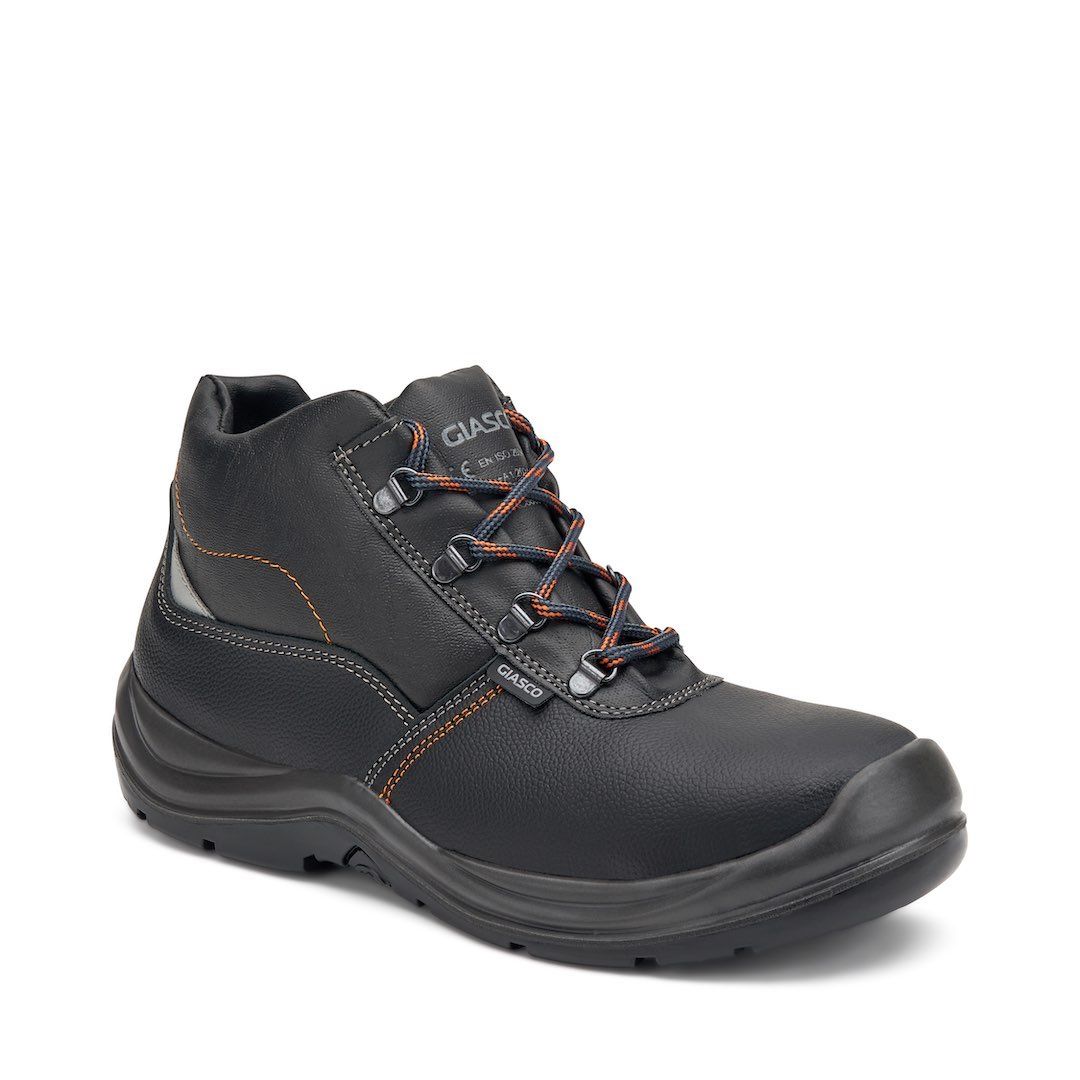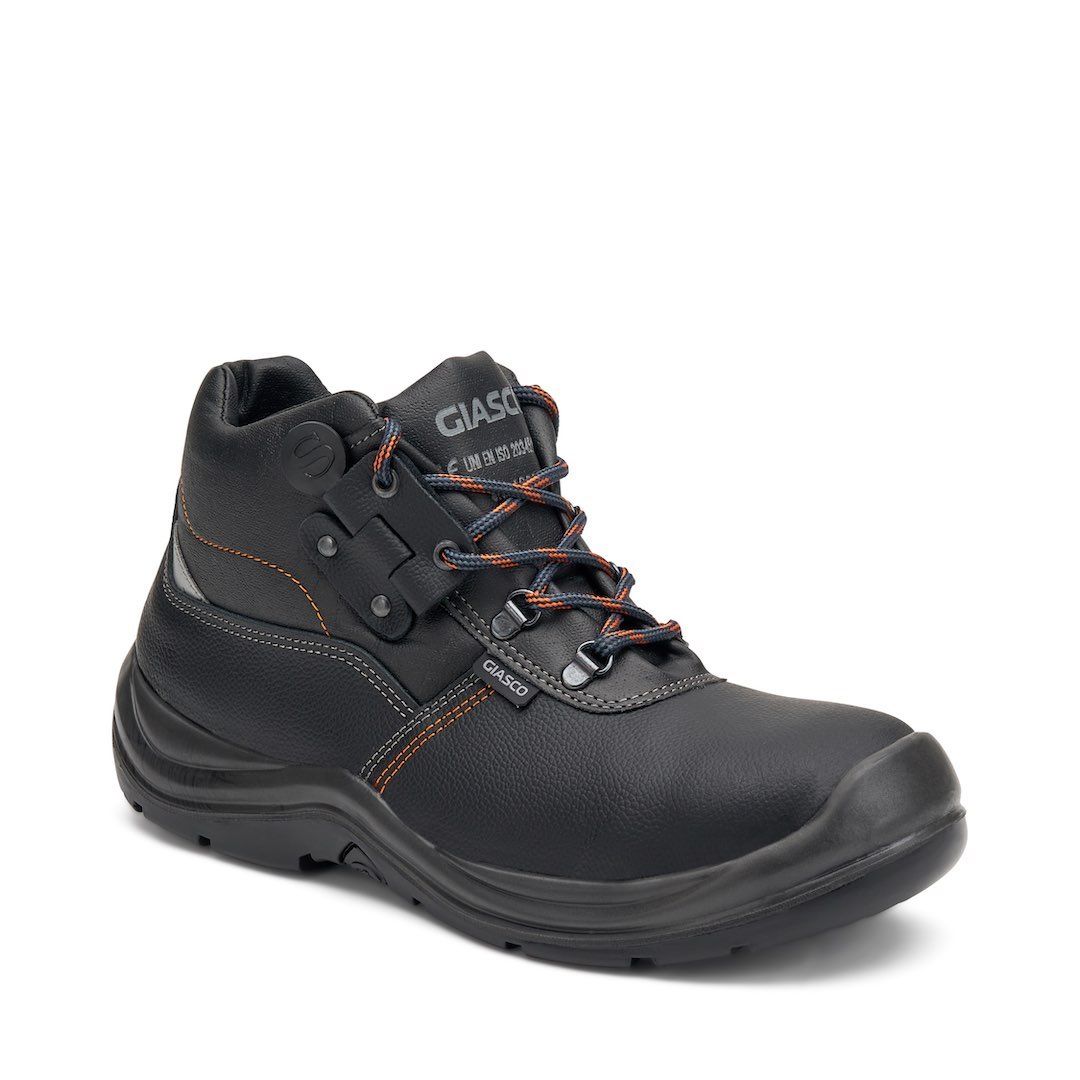MOZART S3
CE UNI EN ISO 20345:2012 S3 SRC
AC810BP
Low safety shoe
36-49
Description
- Toecap: 200J polymeric composite non-thermic
- Upper: Split pigmented leather Hydro 1,8-2,0 mm
- Midsole: Antiperforation steel plate
- Insole: Easy open-cell polyurethane
- Sole: PU/Outsole, PU/Midsole
Description and further information
Low safety shoe, water-resistant WRU leather thickness 1,8-2,0 mm.
Perspiring and abrasion resistant fabric lining.
TOECAP 200J polymeric composite non-thermic according to EN 12568
MIDSOLE antiperforation steel according to EN 12568
SOLE ACTION bidensity polyurethane antistatic, resistant to hydrolysis ISO 5423:92, to hydrocarbons and to abrasion, anti-shock and anti-slipping SRC
INSOLE 4001,Comfort insole, perspiring, removable, anatomic, absorbing, antistatic ed antibacterial. Electrical resistance: the values found prove that this insole is ESD
Size 36-49 Shoe weight Sz 42 gr. 540
Perspiring and abrasion resistant fabric lining.
TOECAP 200J polymeric composite non-thermic according to EN 12568
MIDSOLE antiperforation steel according to EN 12568
SOLE ACTION bidensity polyurethane antistatic, resistant to hydrolysis ISO 5423:92, to hydrocarbons and to abrasion, anti-shock and anti-slipping SRC
INSOLE 4001,Comfort insole, perspiring, removable, anatomic, absorbing, antistatic ed antibacterial. Electrical resistance: the values found prove that this insole is ESD
Size 36-49 Shoe weight Sz 42 gr. 540
Size guide
Size guide
Comparison table of measurements
| EUROPA | UK | US | MILLIMETERS | INCHES |
|---|---|---|---|---|
34 | 2 | 3 | 220 | 8,6 |
35 | 2,5 | 3,5 | 227,50 | 8,9 |
36 | 3 | 4 | 235 | 9,2 |
37 | 4 | 5 | 242,5 | 9,5 |
38 | 5 | 6 | 250 | 9,8 |
39 | 6 | 7 | 257,50 | 10,1 |
40 | 6,5 | 7,5 | 265 | 10,4 |
41 | 7 | 8 | 272,50 | 10,7 |
42 | 8 | 9 | 280 | 11 |
43 | 9 | 10 | 287,50 | 11,3 |
44 | 10 | 11 | 295 | 11,6 |
45 | 10,5 | 11,5 | 302,50 | 11,9 |
46 | 11 | 12 | 310 | 12,2 |
47 | 12 | 13 | 317,50 | 12,5 |
48 | 13 | 14 | 325 | 12,8 |
49 | 14 | 15 | 332,50 | 13,1 |
50 | 14,5 | 15,5 | 340 | 13,4 |
51 | 15 | 16 | 347,50 | 13,7 |
See anti-slip results
ANTI-SLIP RESULTS
Anti-slip performance testing
Ceramic tile floor with NaLS
Forward heel
(heel slip 7°)
≥ 0.31
≥ 0.43
Backward heel
(heel slip 7°)
≥ 0.36
≥ 0.48
Ceramic tile floor with glycerin
Forward heel
(heel slip 7°)
≥ 0.19
≥ 0.31
Backward heel
(heel slip 7°)
≥ 0.22
≥ 0.26
SRA Ceramic + Nails
Flat
≥ 0.32
≥ 0.37
Heel
≥ 0.28
≥ 0.33
SRB Steel + Glicerol
Flat
≥ 0.18
≥ 0.22
Heel
≥ 0.13
≥ 0.24
Recommended areas of use

Automotive Components

Construction and Building Sites

Farming and Agriculture

Logistics and Light Industry

Metal and Wood Carpentry
Certifications applied

Heel Energy Absorption
Certifications
Heel Energy Absorption

Footwear with energy absorption in the heel to reduce impact while walking. Enhances comfort and protects joints in demanding work environments.
Antistatic Footwear
Certifications
Antistatic Footwear

Antistatic footwear designed to dissipate electrostatic charges, protecting the operator and sensitive devices. Ideal for industrial environments and electronic labs. Electrical resistance range from 0.1 MΩ to 1000 MΩ.
Hydrocarbon Resistance
Certifications
Hydrocarbon Resistance

Footwear resistant to hydrocarbons, designed to maintain the properties of the sole when in contact with oils and fuels. Ideal for industrial environments and workshops.
Slip Resistant Sole
Certifications
Slip Resistant Sole

Slip-resistant sole with special compound and tread pattern designed to ensure maximum grip on wet or slippery surfaces. Improves safety during work.
Water-Repellent Upper
Certifications
Water-Repellent Upper

Footwear with water-repellent upper that prevents the penetration of liquids, keeping the foot dry. Perfect for wet environments or outdoor work.
Technical materials
Extreme Lightness
Technical materials
Extreme Lightness

This footwear uses a combination of innovative materials that minimize the weight of the work shoe, thus maximizing comfort and conserving energy at the end of the day.
Steel Plate
Technical materials
Steel Plate

Steel plate inserted in the sole to ensure puncture protection, maintaining resistance and durability in demanding work environments.
Mondo Point 11
Technical materials
Mondo Point 11

Mondo Point is an international standard indicating the type of fit of a particular shoe. In terms of fit, Mondo Point 11 indicates a wide, roomy, and comfortable shoe for the foot.
200J Composite Toecap
Technical materials
200J Composite Toecap

Composite toe cap resistant to impacts up to 200 Joules, lightweight and metal-free, ideal for safely protecting the toes without adding weight to the shoe. Unlike other materials, composite offers several advantages: non-thermal (does not transmit heat), non-magnetic (not detected by metal detectors), and shape-memory (in case of compression, it returns to its original state, freeing the toes).






